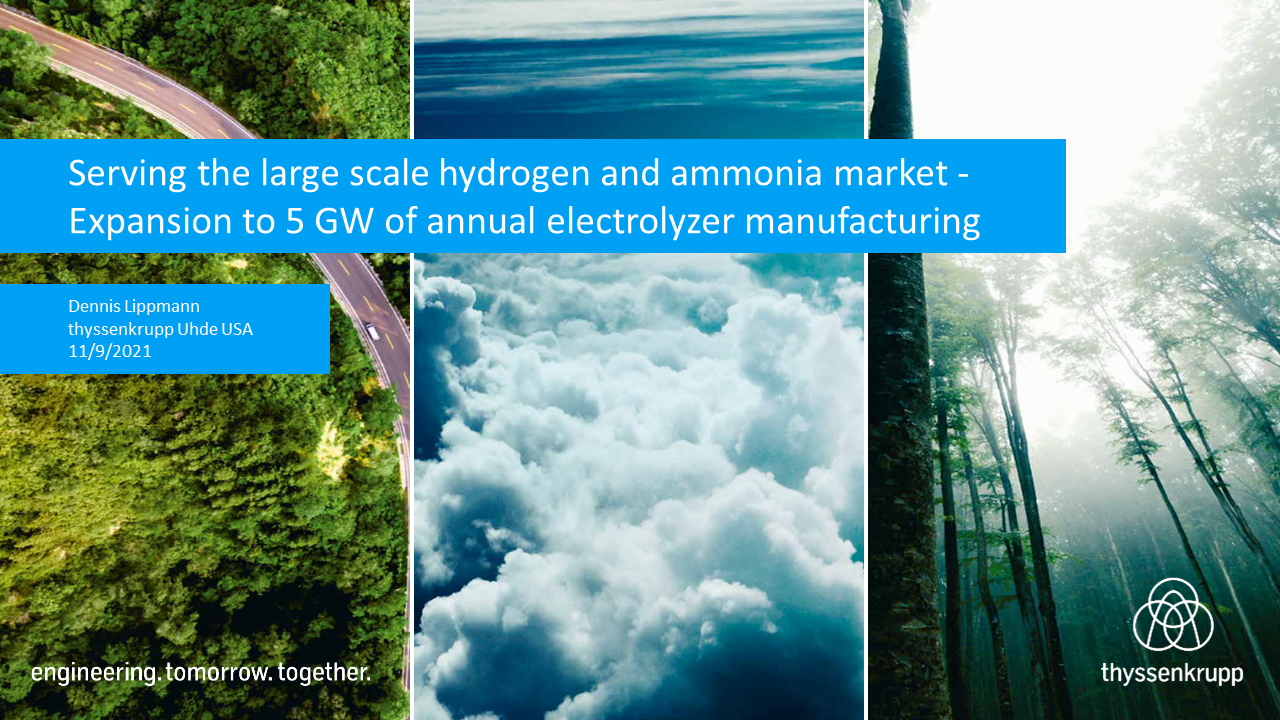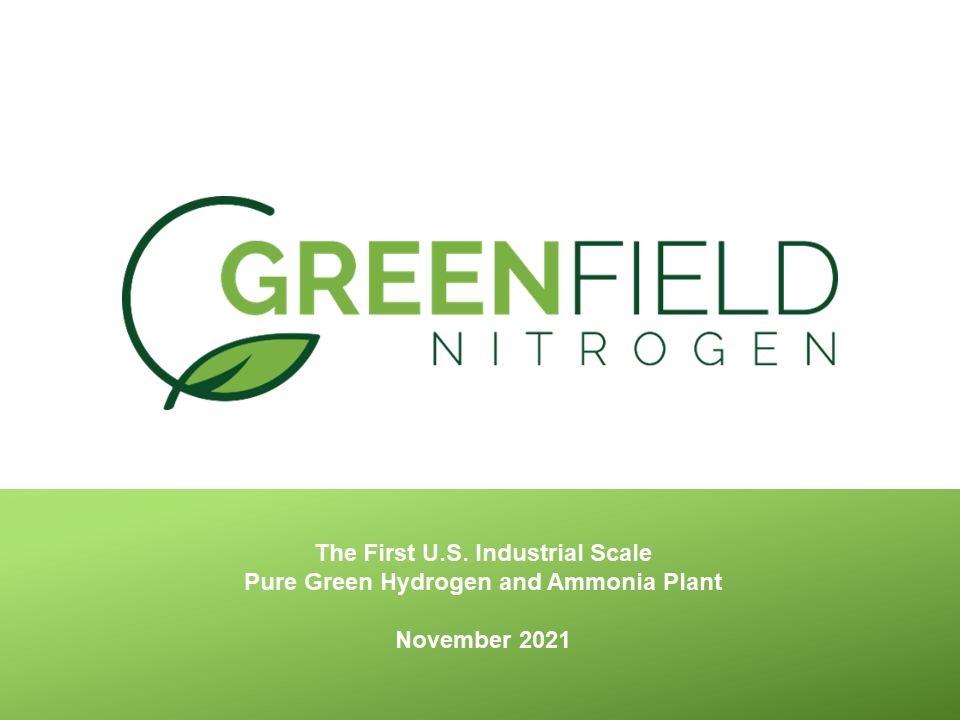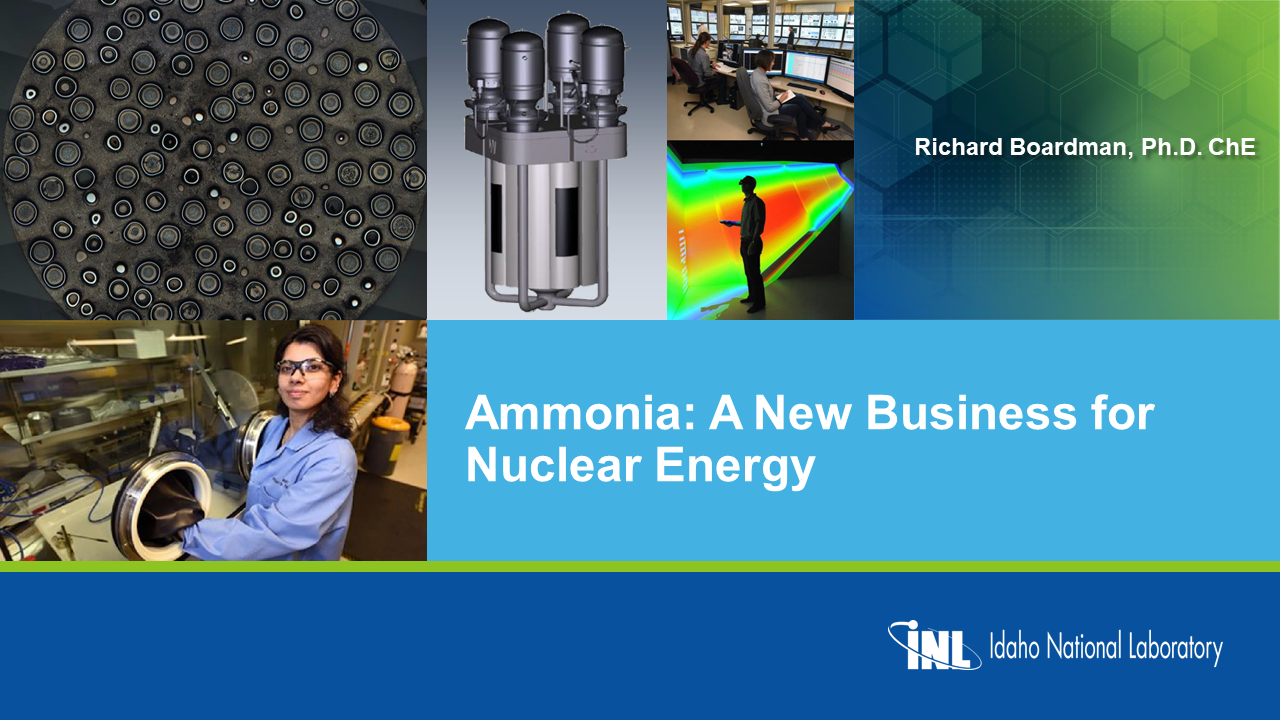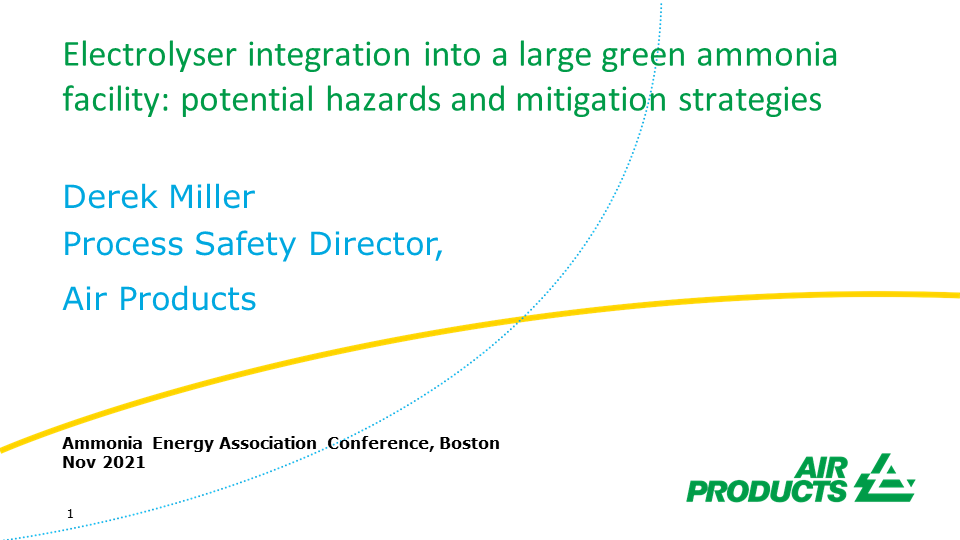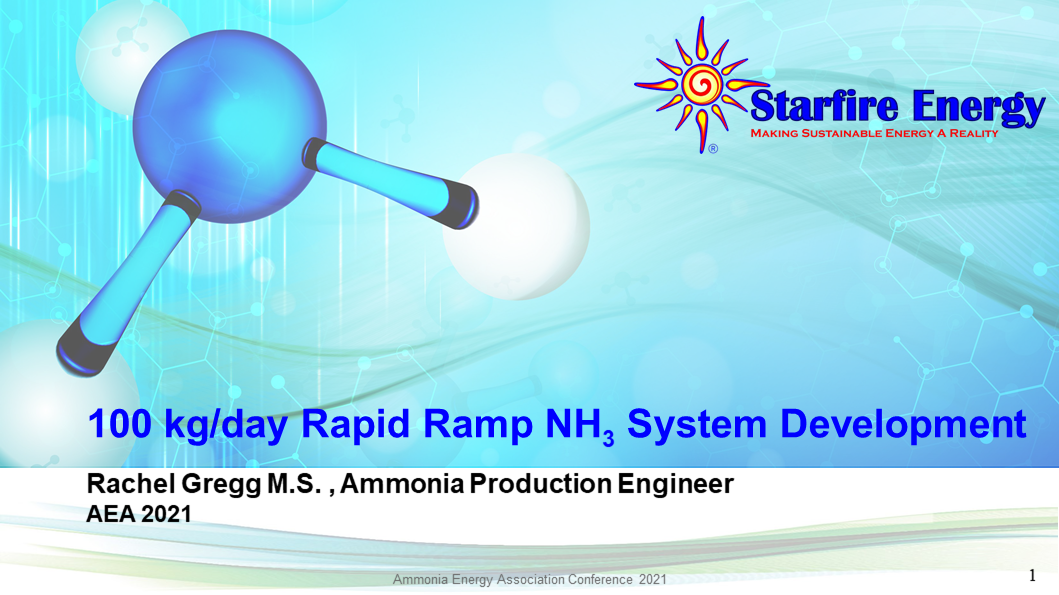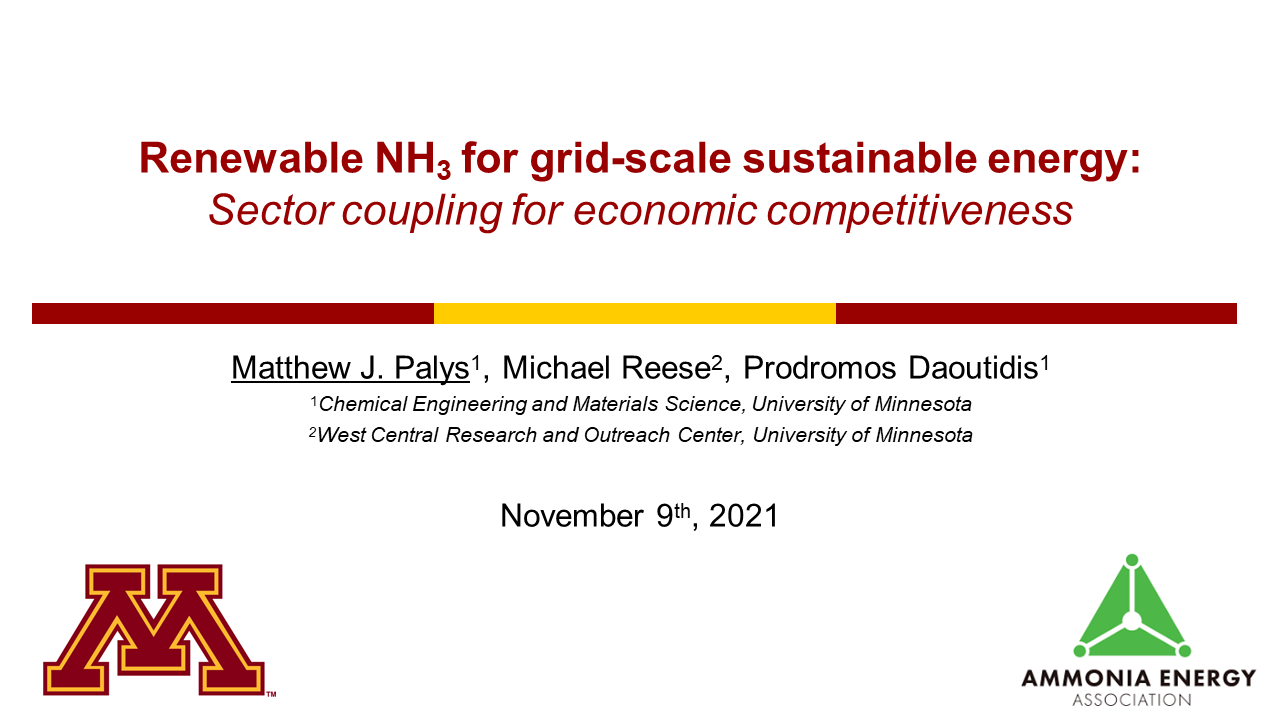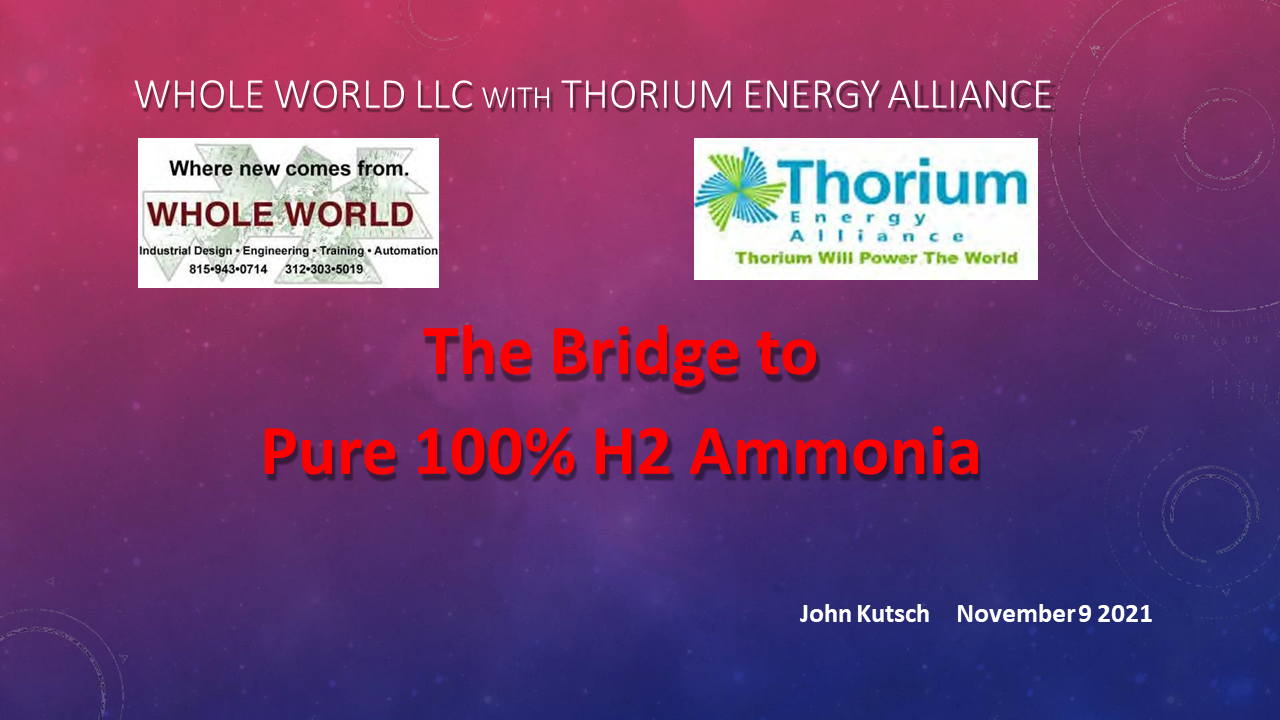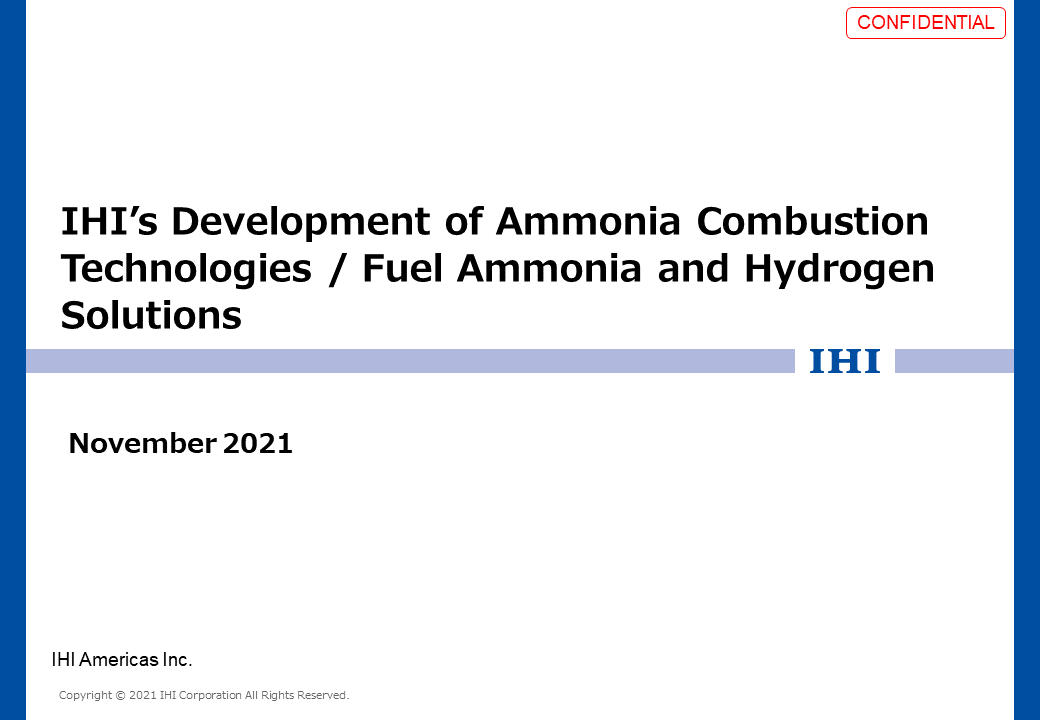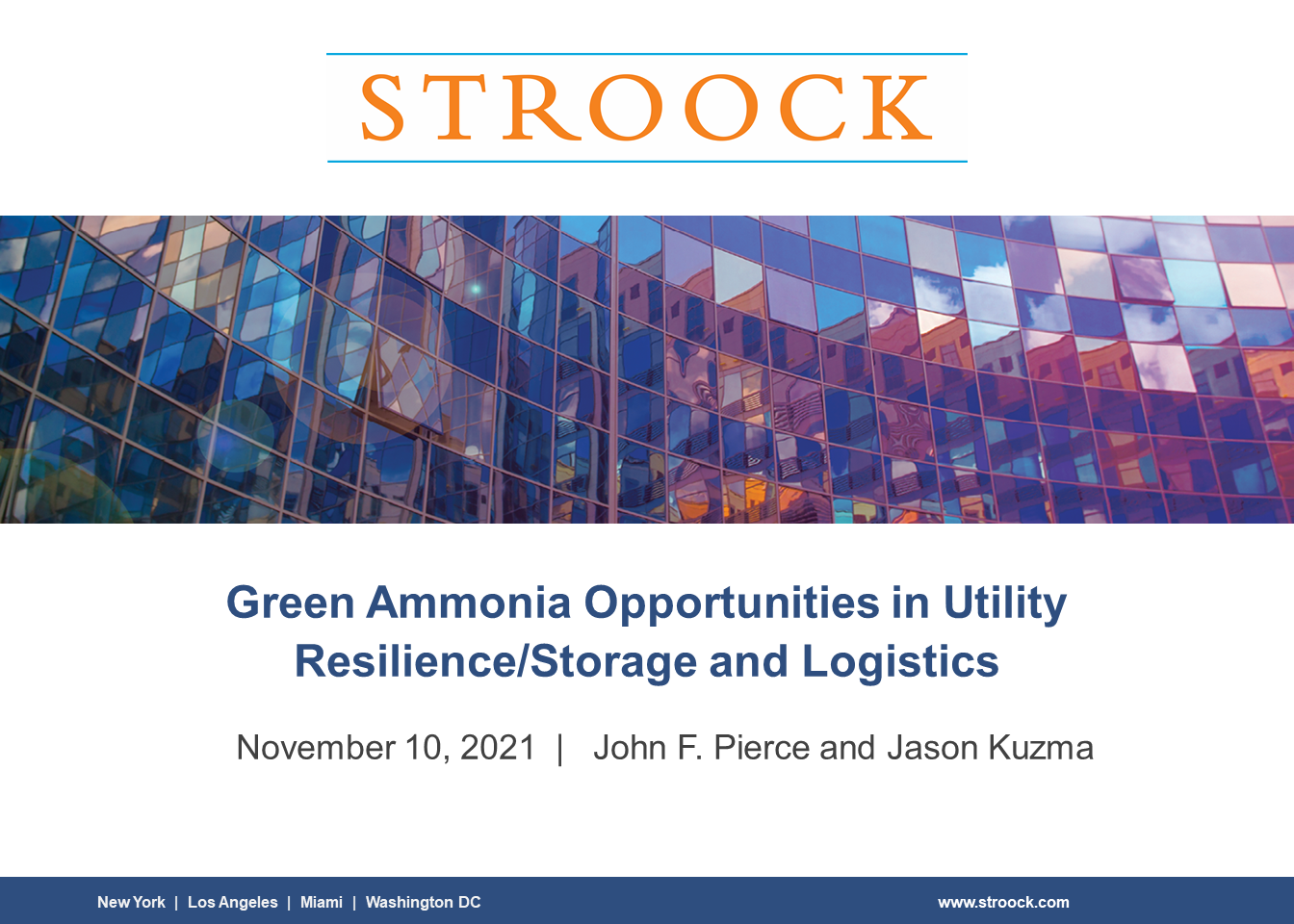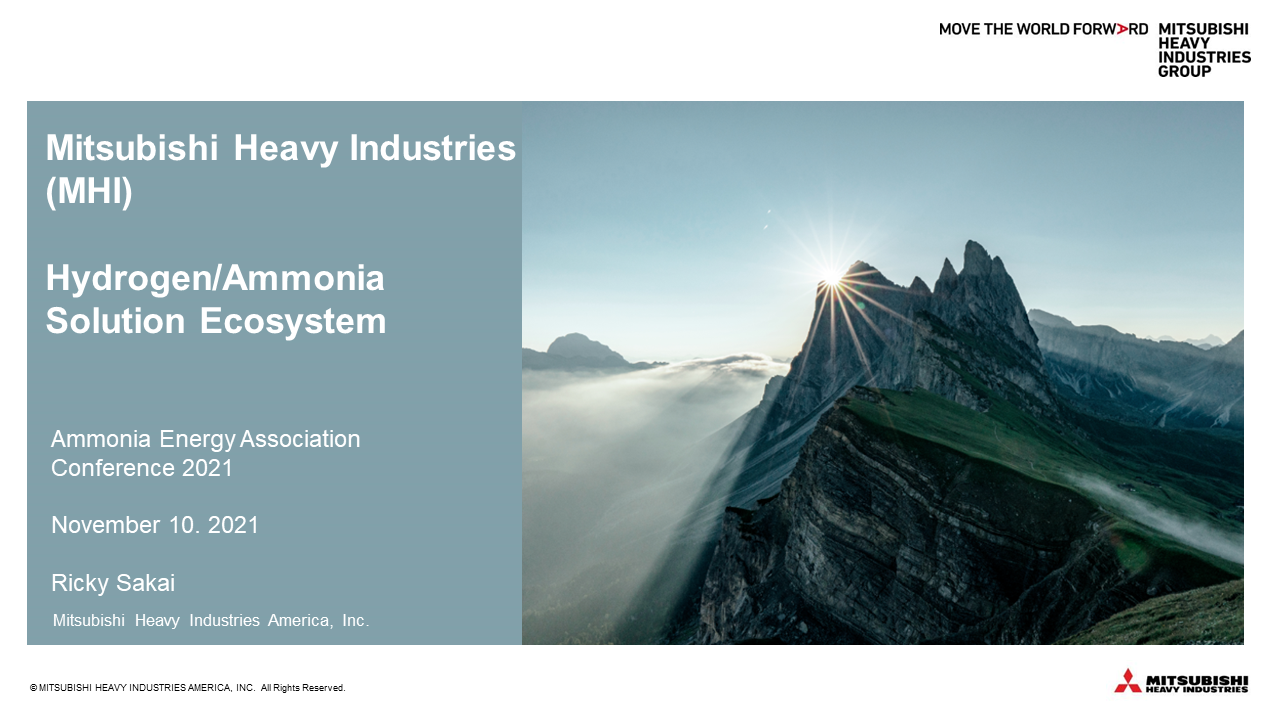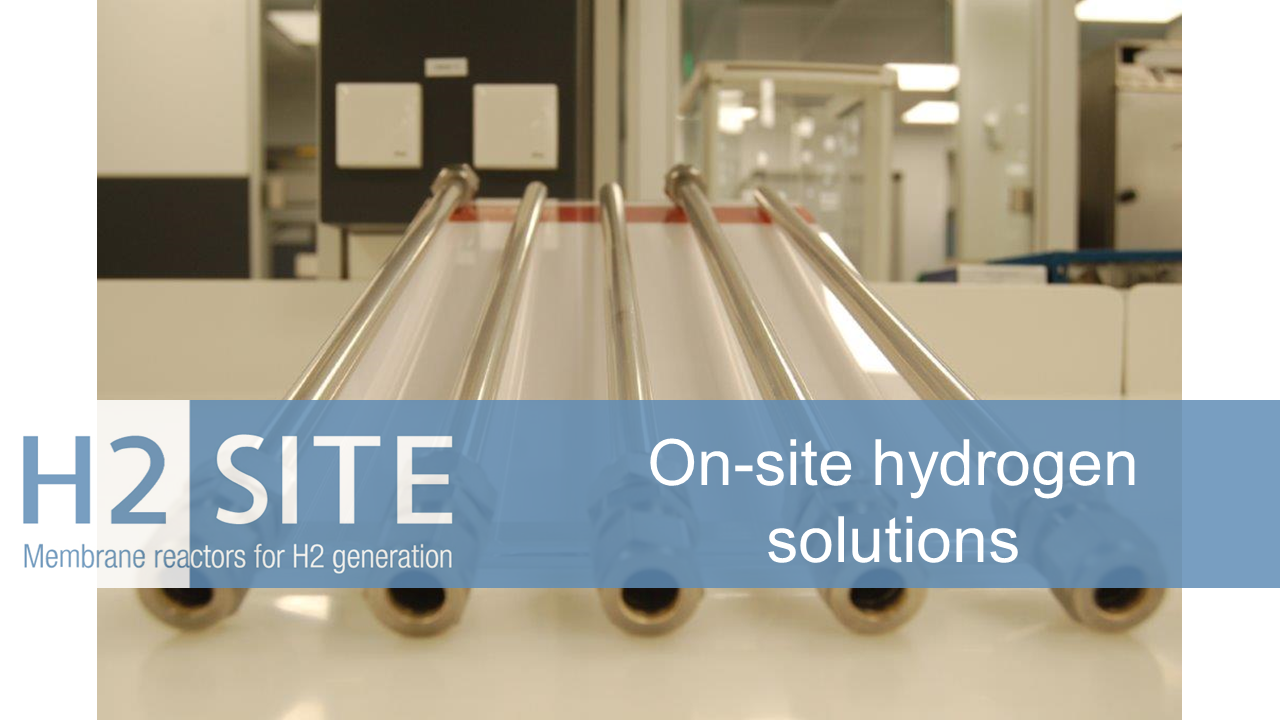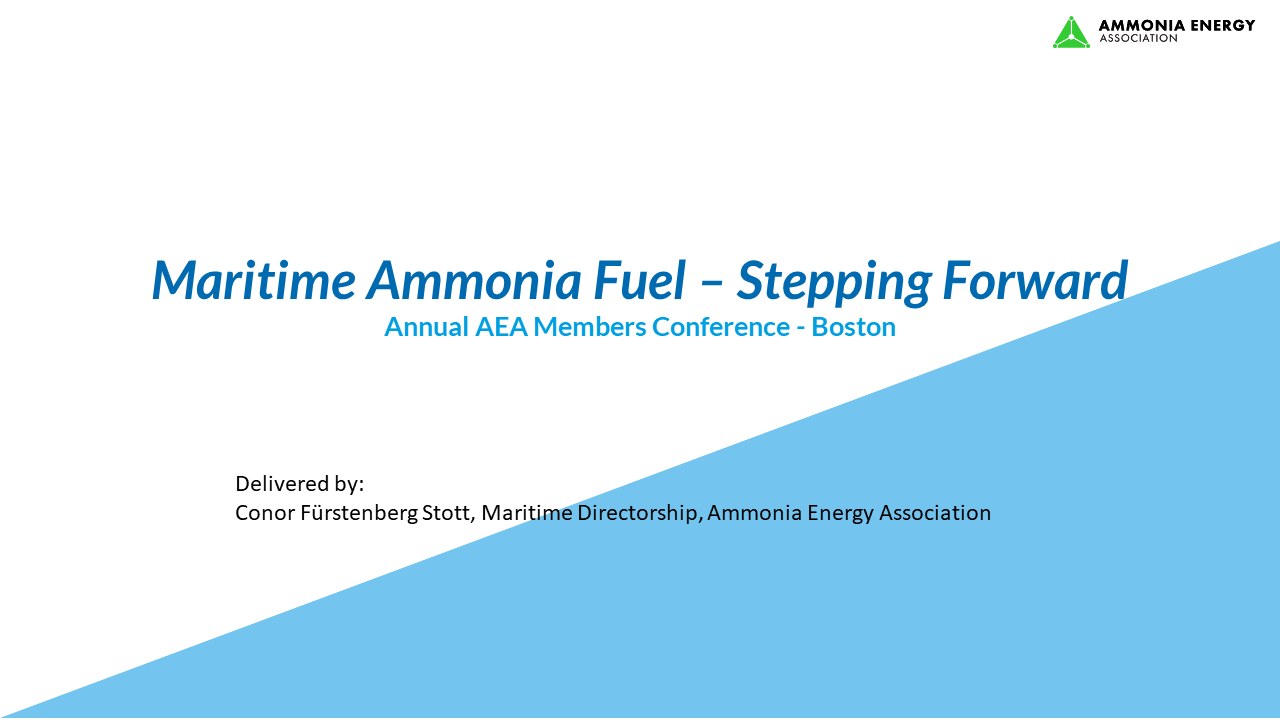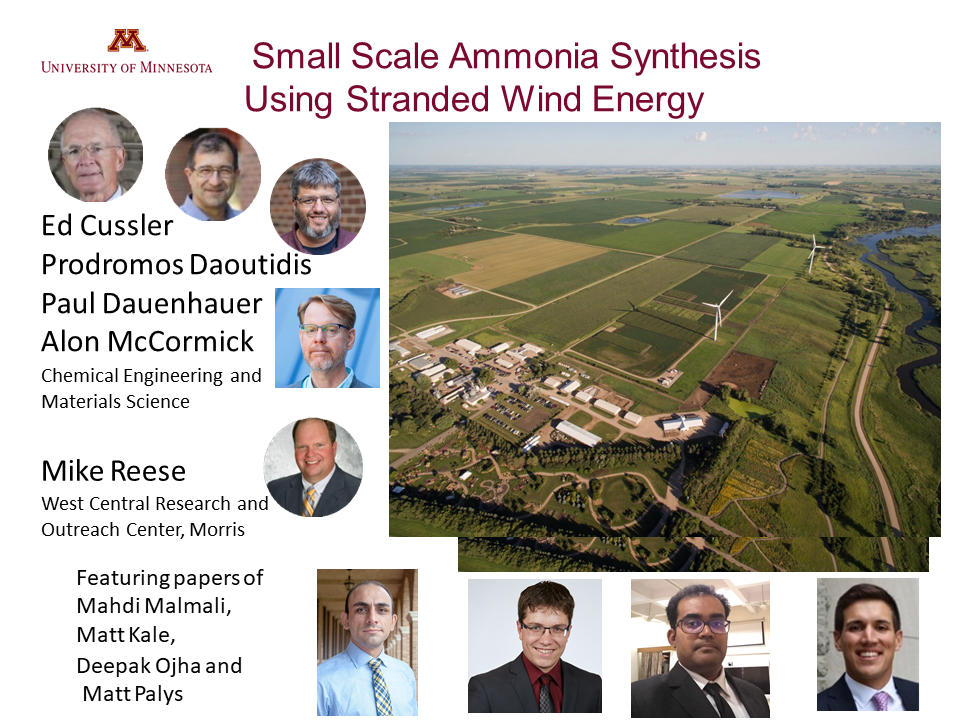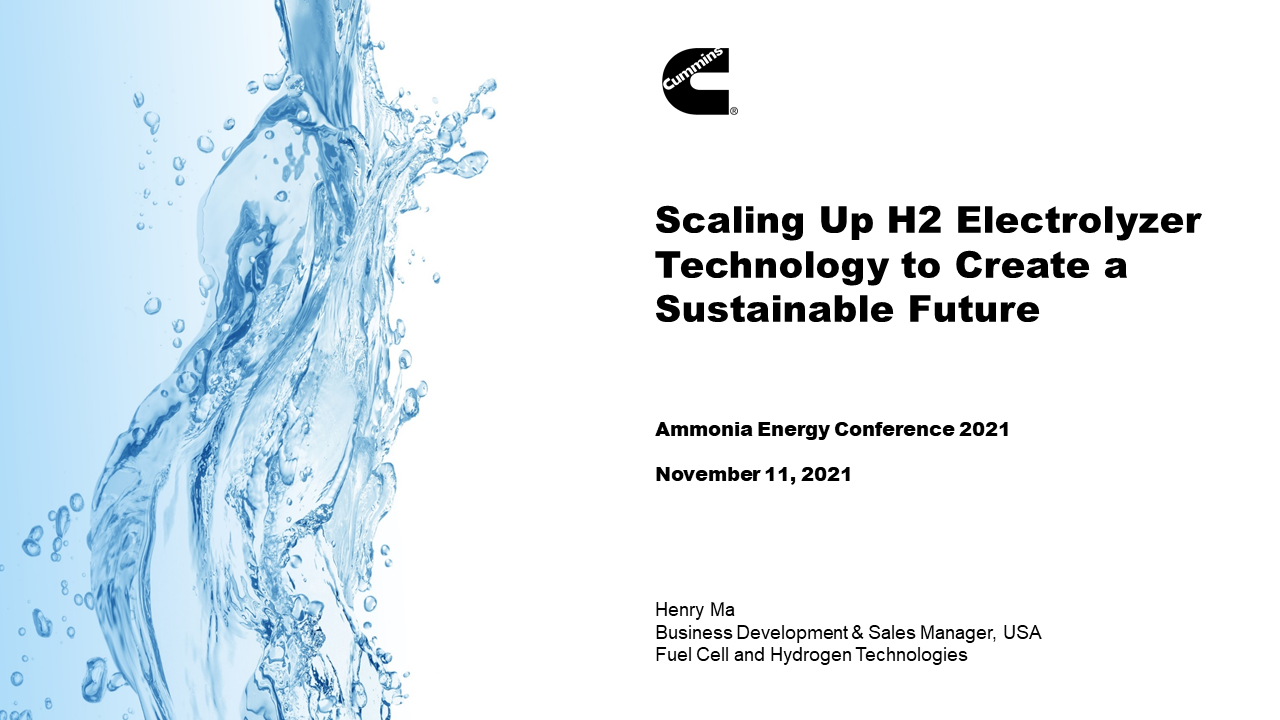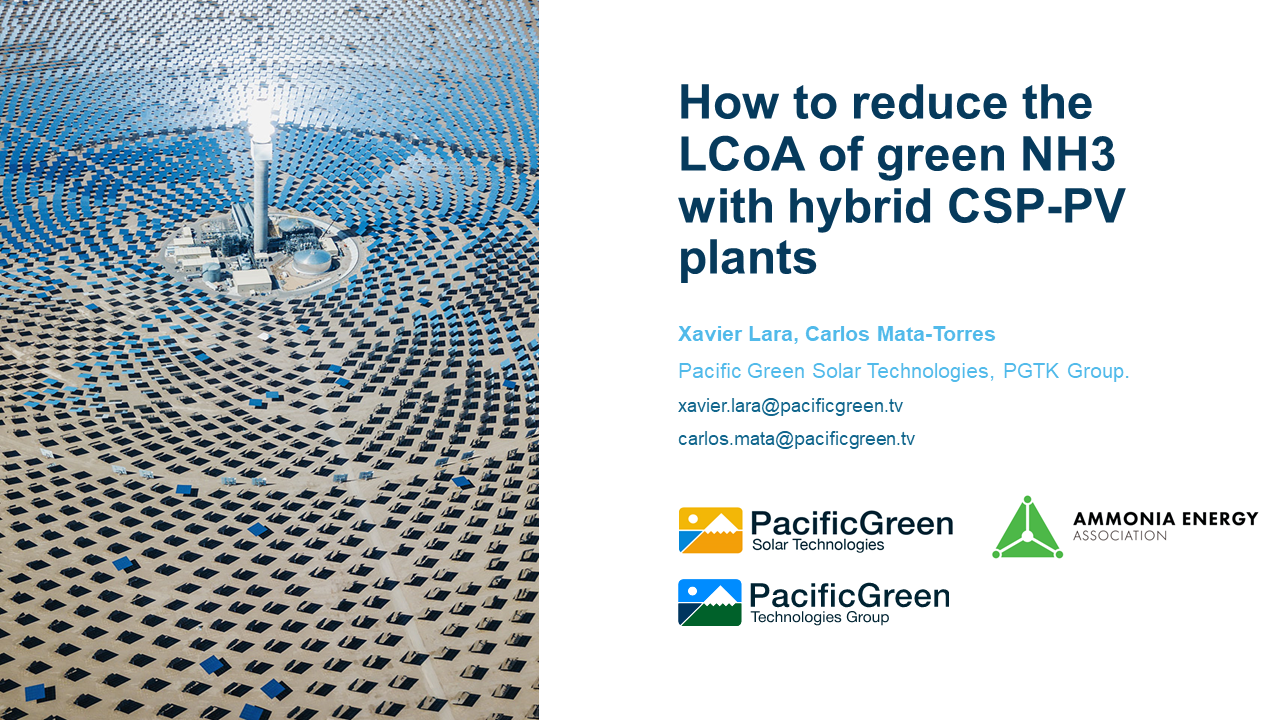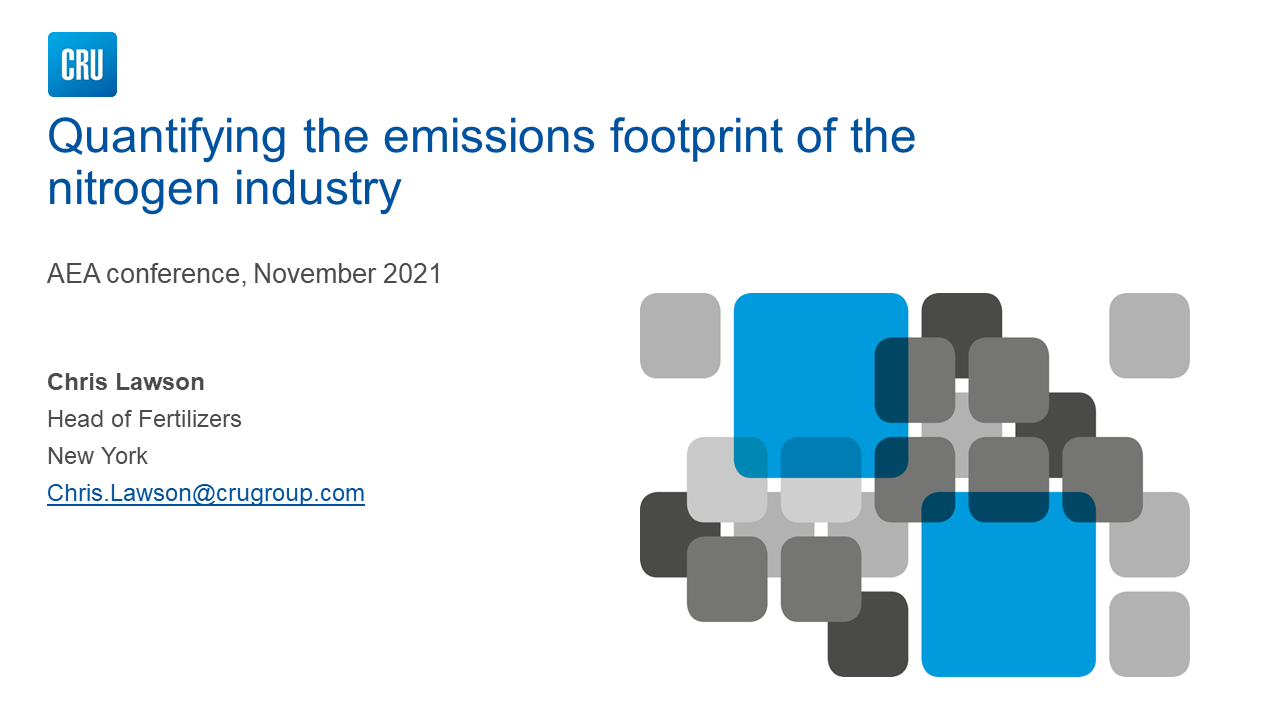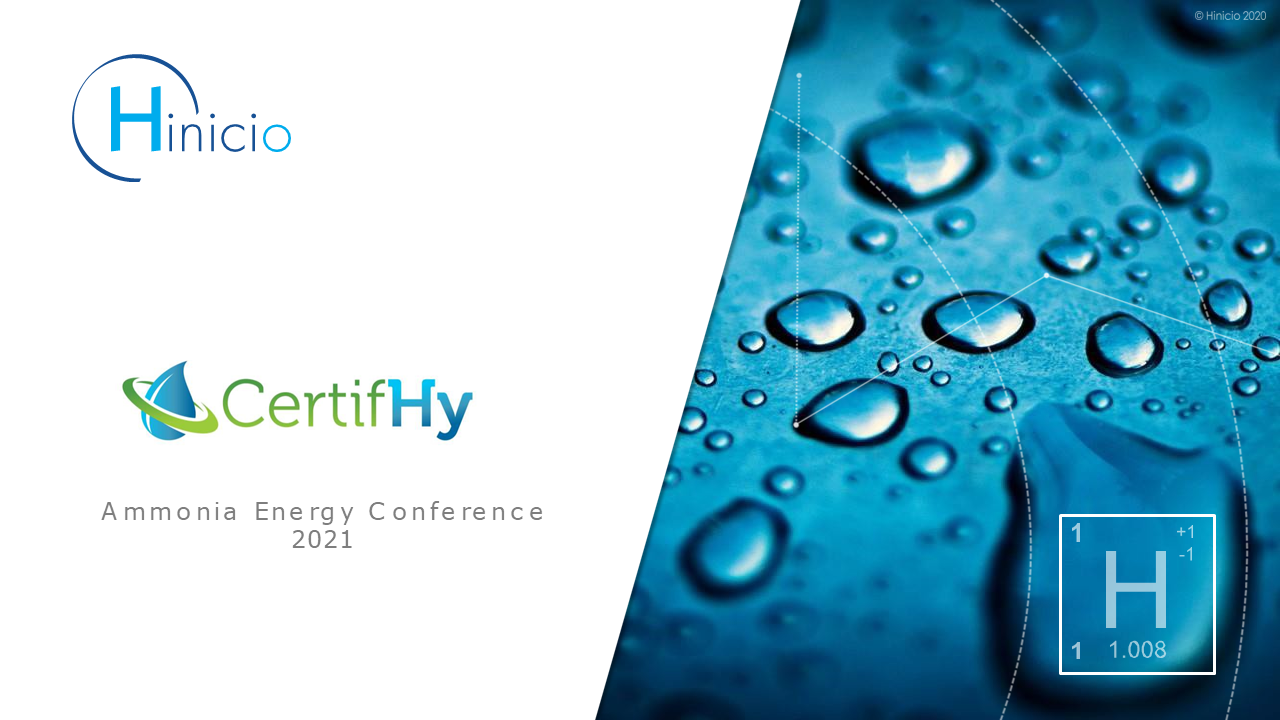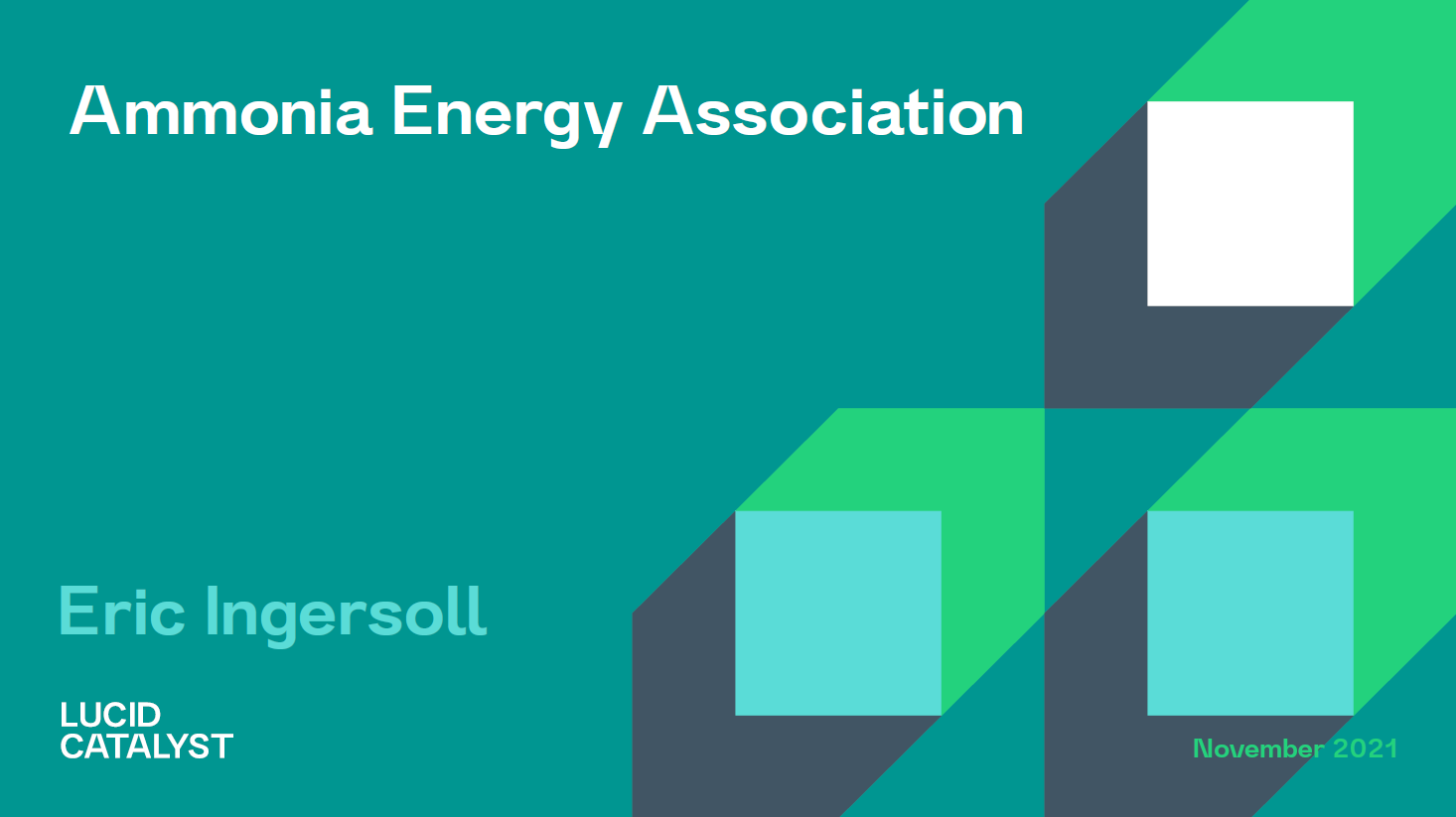Ammonia Energy Conference 2021
November 9, 2021 November 11, 2021 Boston Marriott Copley Place Boston USA
9 – 11 November, Boston, USA
Schedule
Keynote Day One
Tuesday, November 9, 2021 8:30 am 9:00 am
Presentation
Serving the large-scale hydrogen and ammonia market - Expansion to 5 GW of annual electrolyzer manufacturing
To address the challenges of the global energy transition and ever increasing project sizes disruptive approaches are required. Being a global market leader in large scale ammonia plants and electrolysis technology thyssenkrupp will expand its production capacity of 1 GW electrolysis cells today to 5 GW by 2025. Within four years the company will therefore be further expanding its technology leadership along the entire green chemicals value chain. This involves not only the series manufacturing of large-scale water electrolyzers, but also further development of technologies for the production of synthetic fuels, green ammonia, green methanol and synthetic natural gas at…
Session One: Ammonia Production - a project showcase
Tuesday, November 9, 2021 9:00 am 10:30 am
Presentation
Next Generation Technology Integration Platform for Low- and Zero-Carbon Ammonia Production and Utilization
RTI International and its partners are developing a Technology Integration Platform (TIP) to demonstrate next-generation technologies for ammonia (NH3) production and utilization in a modular testbed as part of U.S. Department of Energy ARPA-E’s REFUEL+IT program. The objective of this effort will be to demonstrate the use of NH3 for long duration energy storage, as a fuel, and a hydrogen (H2) carrier. The TIP, which will be housed at the University of Minnesota West Central Research and Outreach Center’s operational hybrid wind and solar test site, will integrate several breakthrough technologies developed in the REFUEL program to demonstrate an advanced…
Presentation
The First Industrial Scale Pure Green Hydrogen and Ammonia Plant
The presentation will address the importance of developing a green hydrogen and ammonia facility in the Midwestern region of the United States and why access to both a strong ammonia market and abundant renewable energy is so critical. The presentation also will show the significant benefit to the agriculture industry of using green ammonia, particularly from a carbon reduction standpoint.
Presentation
Ammonia: A New Business for Nuclear Energy
Nuclear Energy can be used to support and help decarbonize traditional steam methane reforming and electrolysis to produce hydrogen. Options for integrating nuclear with ammonia, and ammonia derivatives include providing power to an air separation unit to produce nitrogen, and hydrogen combustion to deplete oxygen while providing heat for high temperature steam electrolysis. A comparison of CO2 emissions reduction and costs of urea synthesis indicate there is a strong business case for using nuclear reactors at large and small-distributed ammonia plants. A case for producing 3 tons of ammonia from a 1-MWe power supply will be given.
Session Two: Future Ammonia Tech
Tuesday, November 9, 2021 11:00 am 1:00 pm
Presentation
Electrolyser integration into a large green ammonia facility: potential hazards and mitigation strategies
Making green ammonia introduces a number of new challenges and Process Safety considerations relative to conventional ammonia production. The hydrogen is made by electrolysis powered by renewable energy. This presentation provides a brief overview of these challenges that cover scale, green power variability and hazards that are new to ammonia production.
Presentation
Ammonia-based Clean Energy System with Ultra-High Energy Density
Amogy builds a novel carbon-free high energy density system using ammonia (NH3) as a fuel, with the targeted system-level energy densities of >1,000 Wh/kg (gravimetric) and >750 Wh/L (volumetric), respectively. The solution consists of ammonia storage, a miniaturized fuel processor (or called reformer/reactor) and a fuel cell. With highly efficient catalysts operating at significantly low temperature and heat-integrated hybrid reactor, the innovative energy system is optimized for the mobility applications requiring sustainable and dynamic operations. This new energy system could enable the electrification of heavy ground/sea/air transportations, where current existing and emerging technologies, e.g., Li-ion battery or gaseous hydrogen (H2),…
Presentation
Stami Green Ammonia to play a key role in decarbonizing the fertilizer industry
Stamicarbon green ammonia technology is based on the proven Haber-Bosh process and a perfect match for Power to X small and medium size project. It unique operational conditions and lean process design lead to a compact plant configuration with a minimum foot print requirement and thus a very competitive Capex when compared to other technologies. Moreover, the relatively high operating pressure makes it possible to obtain a high conversion per path using a minimum volume of catalyst. Maire Tecnimont group is applying Stami Green Ammonia technology in two green feasibility study projects, Greenfield Nitrogen located in the heart of the…
Presentation
Starfire Energy's Rapid Ramp modular ammonia plant development status and trajectory
Starfire Energy has transformed from a grant-funded company to an investment-funded company. We are scaling up our Rapid Ramp ammonia production technology to provide renewable, flexible, modular ammonia fuel plants specifically designed to seamlessly integrate with naturally varying renewable power. We will provide an update on the status of our prototype modular Rapid Ramp pilot plant. We will also discuss the development path for mass produced modular plants and illustrate how they will provide the means to make affordable carbon-free NH3 fuel at a broad range of plant sizes and help drive ammonia fuel use to “fuel relevance” and onward…
Presentation
Renewable ammonia for grid-scale sustainable energy: Sector coupling for economic competitiveness
Ammonia produced from renewably sourced electrolytic hydrogen has considerable promise as a seasonal energy storage medium to enable high renewable penetration in the electrical power generation mix. Long duration energy storage via ammonia is significantly less expensive than using hydrogen or batteries [1,2]. Renewable ammonia can also be used as in its traditional application as a fertilizer to reduce agricultural carbon intensity. These multiple renewable ammonia use cases give rise to opportunities for sector coupling [3]. For example, an electric utility could deploy ammonia for energy storage while also pursuing additional ammonia production for sale in local agriculture markets. This…
Presentation
The Bridge to 100% Nuclear Hydrogen, Enabling Pure Ammonia
My talk will explain what the bridge to 100% nuclear hydrogen is, and how our LWR fleet can be saved by storage and industrial applications like producing Hydrogen at Scale for Ammonia production; and I will walk the audience through the processes and systems available to us, right now, today, to give new life to merchant nuclear and make the way for advanced nuclear. Our storage systems allow for grid balancing and capacity stabilization using excess Merchant LWR nuclear capacity coupled to thermal and pumped storage, and the system would accept otherwise curtailed renewable inputs. With the storage capacity of…
Session Three: Moving & Storing Ammonia Energy
Tuesday, November 9, 2021 3:30 pm 5:30 pm
Presentation
Ammonia logistics
This presentation will cover logistics in general for ammonia in the USA. In particular, what are the challenges of rail pressures on ammonia transport? What, if any, policy goal does TFI pursue to address challenges with the rail industry?
Presentation
Pipeline Transportation of Ammonia - Helping to Bridge the Gap to a Carbon Free Future
Nustar Energy’s ammonia pipeline system in the US runs for around 2,000 miles, and transports 1.5 million tonnes of anhydrous ammonia per year. Transporting ammonia via pipeline is safe, efficient, cost-effective, has a low-carbon footprint, and will play a critical role in bridging the gap to a carbon-free future.
Keynote Day Two
Wednesday, November 10, 2021 11:00 am 11:30 am
Session Four: New Ammonia Power Systems
Wednesday, November 10, 2021 11:00 am 1:00 pm
Presentation
Impact of ammonia as a fuel / co-fuel on NOx emissions
Ammonia is a hydrogen-based, carbon-free energy carrier. It has good energy density (22.5 MJ/kg) and can be liquefied (about 10 bar at 298 K). With the increasing demand to lower the CO2 emissions worldwide, pure ammonia combustion or co-combustion with a conventional fuel is an alternative solution in turbines, gas engines, power plants, furnaces, and cement kilns. The major challenges with the use of ammonia as a fuel are lowered heat flux and increased NOx emissions. These parameters were analyzed in Linde’s lab-scale tests with pure ammonia as well as mixtures of ammonia and natural gas. Tests were conducted with…
Presentation
IHI’s Development of Ammonia Combustions Technologies / Fuel Ammonia and Hydrogen Solutions
IHI, as a pioneer in the development of the ammonia value chain, has been developing fuel ammonia technology for the last decade. Utilizing existing infrastructure that is either already in place or that can be readily modified, fuel ammonia is highly anticipated as a critical resource to reach a carbon-neutral society. In the presentation, IHI will highlight its involvement in the development of combustion technologies of fuel ammonia for power generation. A specific focus will be placed on the ongoing development and implementation of 20% ammonia co-combustion in existing coal fired power plants. The presentation will feature the JERA demonstration…
Presentation
Green Ammonia Opportunities in Utility Resilience/Storage and Logistics
The presentation will describe projects being undertaken in the Western United States utilizing low cost and redundant renewable energy resources to generate green hydrogen that would be converted to green ammonia; that ammonia will be utilized in various ways but will provide a readily available source of energy for use as an energy storage system by utilities (with a focus on municipal utilities) that will use these systems for energy resiliency and storage, as well as industry and consumer facing users such as fleet fueling (as ammonia, hydrogen, and electrical power for EVs), as well as maritime applications.
Session Five: Ammonia Cracking - new technologies
Wednesday, November 10, 2021 3:30 pm 5:30 pm
Presentation
Catalytic Membrane Reactor for H2-Production from Ammonia
The ability to store massive amounts of dispatchable energy is key for the development of reliable and flexible energy systems, particularly under the new energy concept where large renewable power plants increasingly farther from end users will operate together with distributed wind and solar power plants. Massive energy storage enables a wide set of features ranging from improved supply and demand adjustment, increased system reliability and decarbonization of energy intensive sectors including heating services, industry, and transport. Within this framework, green hydrogen outstands as a key solution to unleash the full potential of renewable energy sources to decarbonize energy applications…
Presentation
Photocatalytic Decomposition of Ammonia
In its recently released 6th assessment report, the International Panel on Climate Change unequivocally stated that human activity is the primary driver of observed global warming effects over the past 150 years. Broad alignment with this assertion by the public and private sectors has been the driving force behind decarbonization efforts and various net-zero emissions goals. To date, decarbonization has focused on increasing renewable power capacity and electrification of mobility with few solutions provided for “hard-to-abate” sectors (transport, shipping, aviation, and heavy industry (cement, steel, and chemicals)) that are reliant on inexpensive petrochemicals as fuels / feedstocks and contribute nearly…
Presentation
The Future of Ammonia Cracking
The global energy sector stands before a massive transformation, going from the present state mainly driven by fossil-based resources and changing into a green future where renewable power will take over as the key energy source. In this transformation new market arises and new technologies are needed. One example is the ammonia cracking technology which only has limited use today. One key issue to solve in the future is the mismatch between where renewable power is available and where energy is needed. Today electrolysis is being commercialized in great scale transforming renewable power into hydrogen. As hydrogen is very complicated…
Presentation
Starfire Energy's Prometheus ammonia cracking technology
The lowest cost way to use ammonia as a fuel is as an intact NH3 molecule. However, its slow flame speed can cause challenges managing flame stability, ammonia slip, and nitrogen oxide formation. Some fuel cells also require hydrogen, rather than ammonia. Ammonia cracking can solve these problems by providing either a NH3 + H2 + N2 blend or, with appropriate processing, pure hydrogen. Starfire Energy’s Prometheus cracking technology is a unique approach that uses an oxide catalyst bonded to a metal foil substrate. It provides excellent opportunities to power the cracking reaction with both waste combustion heat or purpose-generated…
Keynote Day Three
Thursday, November 11, 2021 8:30 am 9:00 am
Presentation
Maritime Ammonia Fuel - Stepping Forward
Clearly, by now it is a great understatement to say that ammonia as a maritime fuel has potential or could be developed as an alternative to fossil maritime fuels. Enablers for maritime ammonia fuel are being developed and we have moved past simple potential. In terms of on board technology, supply and other critical areas, maritime ammonia fuel is stepping forward. However, we are only starting out and the road ahead remains long, unclear and of course paved with many potential barriers. We welcome therefore the dedication and quality of work being undertaken by many different entities to help untangle complexity and illustrate pathways. Within…
Session Six: Ammonia Production - a technical showcase
Thursday, November 11, 2021 9:00 am 11:00 am
Presentation
Dynamic Analysis of Flex-gNH3 – a Green Ammonia Synthesis Process
The future of a decarbonised ammonia production is seen as the alignment of the intermittent production of renewable energy, energy demands and ammonia process features. The current Haber-Bosch ammonia synthesis process can indeed be altered to enable green and sustainable ammonia production primarily being driven by renewable electricity. However, this will require to enhance current commercial Haber-Bosch (H-B) process flexibility with modifications to redefine the conventional H–B process with a new optimised control. The technical feasibility of green-ammonia (gNH3) process had been widely discussed and analysed focusing on its energy efficiency, the development of small-scale, distributed, modularised processes that can…
Presentation
Optimizing absorption to improve Haber-Bosch synthesis
Alon McCormickMatthew KaleCory MarquartDeepak OjhaMatthew PalysChinomso Emmanuel OnuohaZac PursellEdward CusslerProdromos DaoutidisPaul DauenhauerMichael ReeseSameer ParvathikarMahdi Malmali
Ammonia absorber columns offer an alternative separation unit to replace condensation in the Haber-Bosch synthesis loop. Metal halide salts can selectively separate ammonia from the reactor outlet gas mixture and incorporate it into their crystal lattice with remarkably high thermodynamic capacity. While the salts’ working capacity can be limited and unstable when they are in their pure form, the capacity is stable and can be high when using a porous silica support. Here, we discuss optimal conditions for uptake and release of ammonia. The production capacity (ammonia processed per unit absorbent and per unit production time) depends on processing parameters…
Presentation
Improving operational safety in ammonia installations by a remote early warning system
Accidental releases of ammonia constitute severe risks and common issue of conventional detection systems are the lack of early warning functionality and limited situational awareness. The scanfeld early warning for gas leaks is bridging this gap. Reliable early warning systems for the prevention of major gas releases are crucial for all types of ammonia processing installations and especially new greenfield applications such as energy storage or direct propulsion. The highest possible safety standards are required for a positive public perception and the acceptance of ammonia technologies in general. Our optical remote sensing solution is a particularly suitable method for the…
Presentation
The role of green ammonia in sector coupling and seasonal electricity storage
Green ammonia (NH3) will have a versatile role in the decarbonisation of large sectors of the global economy. Of these sectors green ammonia will likely have the most competitive potential in decarbonising long-duration energy storage, regional energy and hydrogen transport, shipping propulsion fuel, and replacing existing brown ammonia production for fertiliser and other chemicals. In this presentation, we introduce our modelling on the cross-sector integration of green ammonia into large-scale energy systems, with a case study of India. In the power sector, ammonia may play a role in seasonal storage, system resilience, and electricity import/export. We co-developed the world’s first…
Presentation
Scaling Up H2 Electrolyzer Technology to Create a Sustainable Future
Cummins is a global power leader that designs, manufactures, sells and services traditional and alternative fuel powertrains and powertrain-related components including batteries, electrified power systems, hydrogen generation (electrolyzers), and fuel cell products. As the need to decarbonize industry and mobility becomes clearer, hydrogen needs to rise to scale as a key component of the global energy solution. Processes like ammonia, methanol, refining, other industries, and mobility have been revolutionizing their value chain to meet these climate changing goals. Cummins intends to advance affordable hydrogen production, transport, storage, and utilization to enable decarbonization and market opportunities across these market sectors. “Creating…
Presentation
How to reduce the LCoA of green NH3 with hybrid CSP-PV plants
The gNH3 production requires a large amount of renewable energy, where the LCoA is strongly affected by the LCoE. If it is considered only a solar solution, the low Photovoltaic (PV) technology cost can achieve competitive gH2 cost. However, the industrial NH3 plant would require power stability in a 24/7 profile, and a storage solution must be included. In this case, the Concentrating Solar Power (CSP) presents an unique and promising advantage with its dispatchability to fulfill this necessity. Therefore, a hybrid CSP+PV solution can give the best cost solution power mix for the green ammonia industry.
Session Seven: Certification
Thursday, November 11, 2021 11:30 am 1:30 pm
Presentation
Quantifying the emissions footprint of the nitrogen industry
Understanding and quantifying the emissions footprint of an industry is critical to decarbonisation efforts. Without high quality and standardised data, an industry will continually stall on lowering emissions. But this is quickly changing. Companies are seeking to understand their emissions landscape and benchmark themselves accurately. Many leading companies are setting ambitious emissions reduction targets. But its not just the first movers from whom this data matters. Policy is changing as with emissions trading schemes are rolled out across the world. This will force the laggards into action. CRU has developed readily available standardised data and methodologies to capture emissions across…
Presentation
Hinicio & CertifHy
Since 2014, Hinicio is leading CertifHy, the first EU-wide Guarantee of Origin scheme for hydrogen, including a definition for Green Hydrogen and (non-renewable) low-carbon Hydrogen. We will share our experience and provide insights and relevant lessons learned from designing and implementing CertifHy. We will touch upon dealing with multiple primary energies going into a process which might be renewable and non-renewable, and the carbon intensity calculation in multi-input and multi-output plants.
Presentation
Towards Global Ammonia Energy Certification Standards
Considerable attention is now being paid to both life-cycle carbon intensity standards and guarantees of origin for many low carbon fuels, including ammonia energy, to ensure that international trade may be facilitated, expedited, and given priority guarantees of market access under long-term supply agreements. Standardisation and certification are crucial to these markets. Further, the prospect of commanding a “clean/green” market premium, which buyers in markets such as the European Union and East Asia may be prepared to pay for ammonia energy imports, may also set the necessary impulses to stimulate the domestic ammonia energy economies around the world. Certifications can,…
Workshops
Presentation
Nuclear Ammonia Workshop - LucidCatalyst
Please access Eric’s presentation here: https://www.lucidcatalyst.com/post/ammonia-energy-conference-2021
